Are you a seasoned hunter or an outdoor enthusiast looking to elevate your hunting experience? Have you ever considered embarking on an exhilarating Montana whitetail hunt? Montana is more than just Big Sky Country; it’s also the undisputed haven for whitetail deer enthusiasts.
With immense wildlife diversity and jaw-dropping landscapes, the Treasure State’s many challenges shape the perfect opportunity for those looking to experience something different in their outdoor ventures.
Whether you’re an intermediate hunter looking to level up or an expert in the field, the state’s expansive forests and mountainous regions offer rich opportunities for whitetail hunting.
In this article, you’ll go beyond the guidebooks and delve into the very heart of Montana’s whitetail hunting world. From highlighting the ideal hunting gear checklist to mapping out its premier whitetail grounds, we’ll arm you with the essential knowledge.
- Related article: Where to Hunt Deer in Montana
Saddle up, grab your gear, and let’s unravel the secrets to an unforgettable whitetail hunting experience in Montana, a true wilderness paradise!
7 Key Takeaways on Montana Whitetail Hunts
- Success in Montana’s whitetail hunting season is tied to knowing their feeding and mating patterns, allowing for better predictions and successful ambush locations.
- Montana’s expansive wilderness offers multiple whitetail deer habitats, requiring thorough scouting and adaptation to seasonal changes.
- Camouflage gear, slow movements, and understanding the deer’s natural flows are crucial for minimizing disruption and increasing hunting success.
- Long-range optics, scent control, weaponry, and hunting during peak activity hours are indispensable for whitetail hunting.
- Montana outfitters for whitetail hunting, catering to diverse terrains and hunting styles, offer expert guidance and a variety of choices for an optimal hunting experience.
- From firearms and ammunition to clothing and emergency supplies, carefully chosen gear is vital for Montana’s unpredictable conditions.
- Key hunting areas like Flathead National Forest, Milk River, and Missouri Breaks, along with hunting tactics like mastering the wind, practicing shooting, and using deer calls, are essential for a successful Montana whitetail hunting trip.
Montana Whitetail Hunting Guide
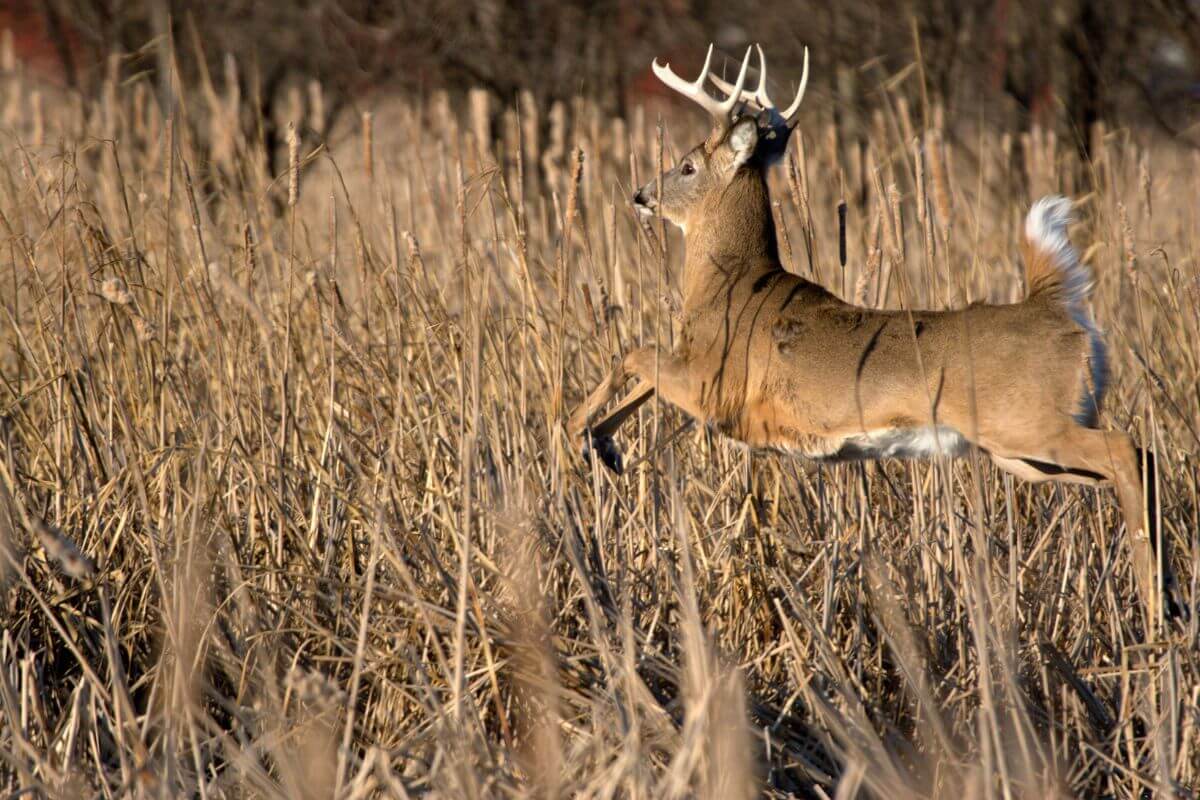
Montana’s rich wilderness promises an exhilarating experience for both amateur and experienced hunters. Through patience, preparation, and a deep understanding of your prey, you can enhance your chances of a fruitful whitetail hunt.
Get ready to understand the understated game of bagging that Montana whitetail! This comprehensive guide will walk you through the ins and outs of whitetail hunting in the glorious landscapes of Montana.
1. Montana Whitetail Outfitters
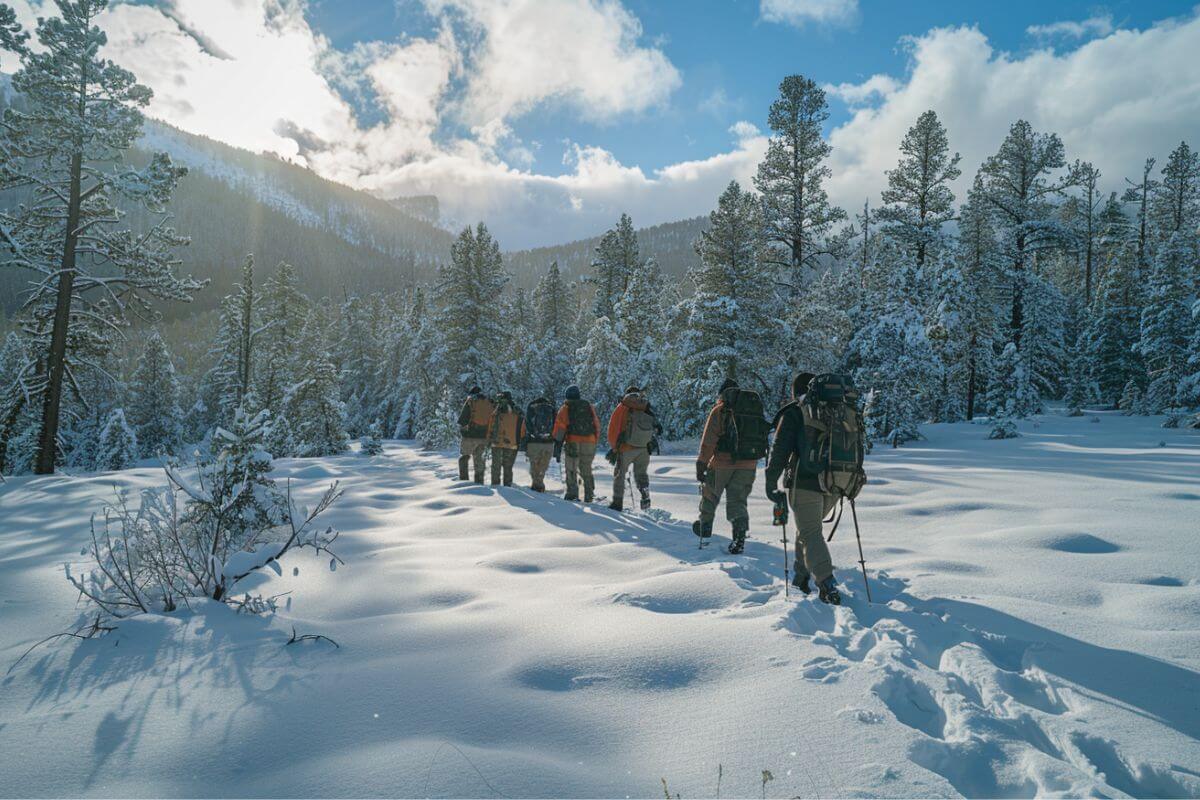
When you’re laying out your epic hunt in Montana, it’s important to get grounded with an outfitter who knows the lay of the land (literally). Whether you’re into mountain whitetails in the Flathead National Forest or the more open territory along the Milk River, there’s a guide just for your wild game acumen.
Here are a few top Montana Whitetail Outfitters to get you started:
| Montana Outfitter | Location | Specialty | Hunting Terrain | Why It Stands Out |
| Swan Mountain Outfitters | Flathead National Forest, Northwest Montana | Mountain whitetail hunting | Public land, with a mix of mountain and plains whitetails | Exclusive mountain whitetail expeditions, perfect for a challenge or change of pace. |
| Montana Whitetails | Multiple areas in Montana | Guided whitetail deer archery hunting | Private land with a high-quality whitetail population | Fully licensed and insured, offering mature bucks as the rule. |
| Milk River Outfitters | Ranches along the Milk, Missouri, and Powder Rivers | Whitetail, mule deer, and antelope | Scouting-intensive to position hunters in optimal locations | Countless pre-season hours were spent scouting to achieve that trophy whitetail. |
| Double Deuce Outfitters | Yellowstone River, Southeastern Montana | Whitetail deer hunts | Wide range alongside the Yellowstone River | Expect to see anywhere from 10 to 50 deer per day. |
Finding a spot to set up camp and ultimately, your (licensed) sights on Montana’s Whitetail Deer is a blend of science and skill. Each of these outfitters offers a unique Montana hunting experience, so the choice is yours, cowboy.
2. Montana Whitetail Hunting Gear
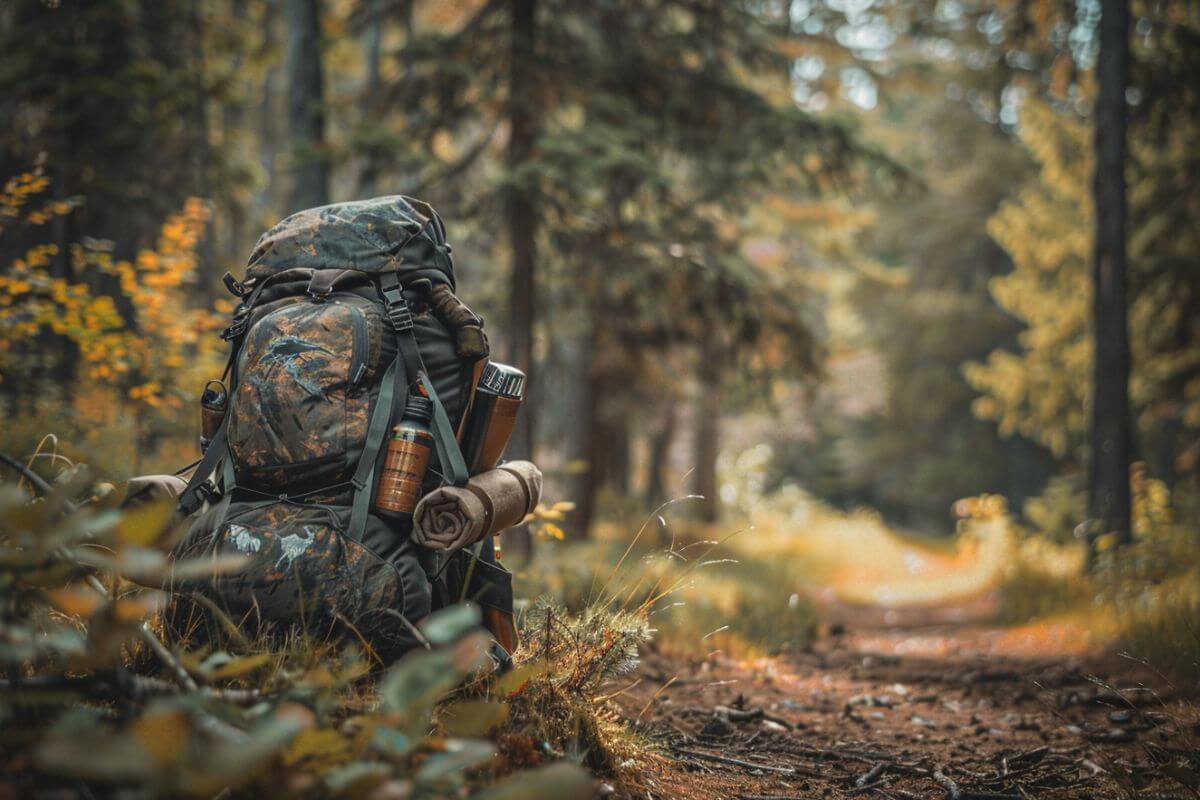
To set off on a successful whitetail venture, your gear needs to be as adaptable as you are. Montana’s diverse terrain and ever-changing weather conditions call for meticulously selected gear to give you an edge.
Essential Whitetail Hunting Gear in Montana:
- Firearm or Bow – Choose a weapon within Montana’s hunting regulations and hone your proficiency. Being comfortable with your choice is crucial.
- Ammunition or Arrows – Always carry more than you think you’ll need and check specific state requirements.
- Hunting License and Tags – Ensure you’re legally compliant for the specific hunting unit in Montana. Stay updated with Montana Fish, Wildlife & Parks.
- Clothing – Dress in layers suitable for cold, damp, or even snowy conditions, and don’t forget the hunter orange to increase visibility.
- Boots – They should be insulated, waterproof, and built to tackle varied terrain.
- Optics – Binoculars or a spotting scope are your friends for deer identification at a distance.
- Scent Control Products – Use odor-minimizing soaps, sprays, and detergents.
- Camo Face Paint or Mask – This breaks up your telltale facial features, crucial for staying undetected by your buck.
- Thermos, Hand Warmers, and Hydration – Stay warm with a thermos and hand warmers, and well-hydrated with a trusty water bottle.
- Emergency Supplies – An emergency whistle, fire starter, and a compact survival kit for unforeseen situations.
Remember, your aim with this gear is to blend in seamlessly, while still standing out to your fellow hunters. By ensuring you’re prepared for anything Montana throws your way, you’re one step closer to locking eyes with that elusive deer buck.
3. Montana Whitetail Hunting Best Spots
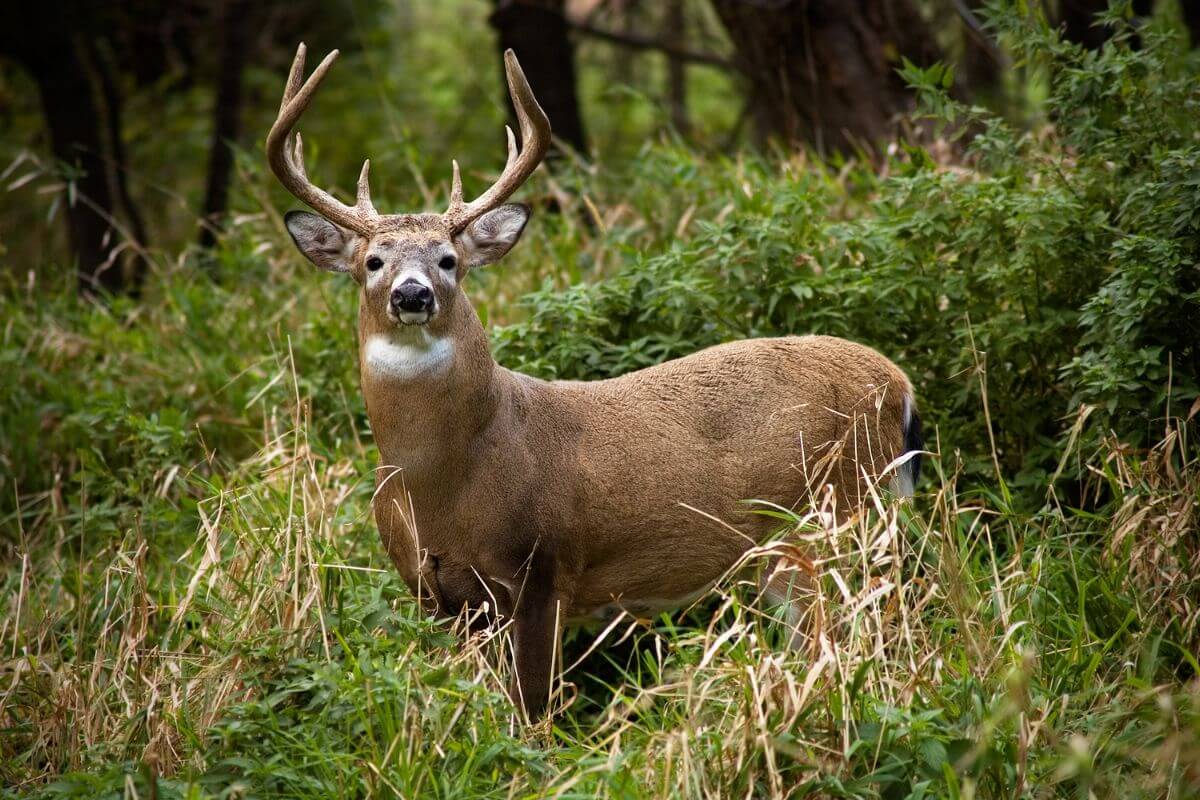
When it comes to whitetail hunting, spots matter. If you’re after the prizewinning bucks in Montana, you’ll need to scope out their favorite stomping grounds. Whitetails are the original adaptable city dwellers, favoring both rural and human-altered landscapes.
Best Whitetail Hunting Spots in Montana:
- Flathead National Forest – Legendary for trophy whitetail deer, this is a top choice.
- Lewis & Clark National Forest – Mule deer and whitetails, as well as elk all call this place home.
- Milk River – A prime tributary for prolific whitetail action.
- Missouri Breaks – Whitetails can be found here, especially in lush creek bottoms.
Whitetails have diverse tastes, from canola and conifer forests to rural subdevelopments and golf course complexes. Luckily, Montana offers a buffet of natural habitats for these crafty critters. So to up your hunting game, focus on these natural and man-made landscapes where whitetails are known to thrive.
4. Montana Whitetail Hunting Tips
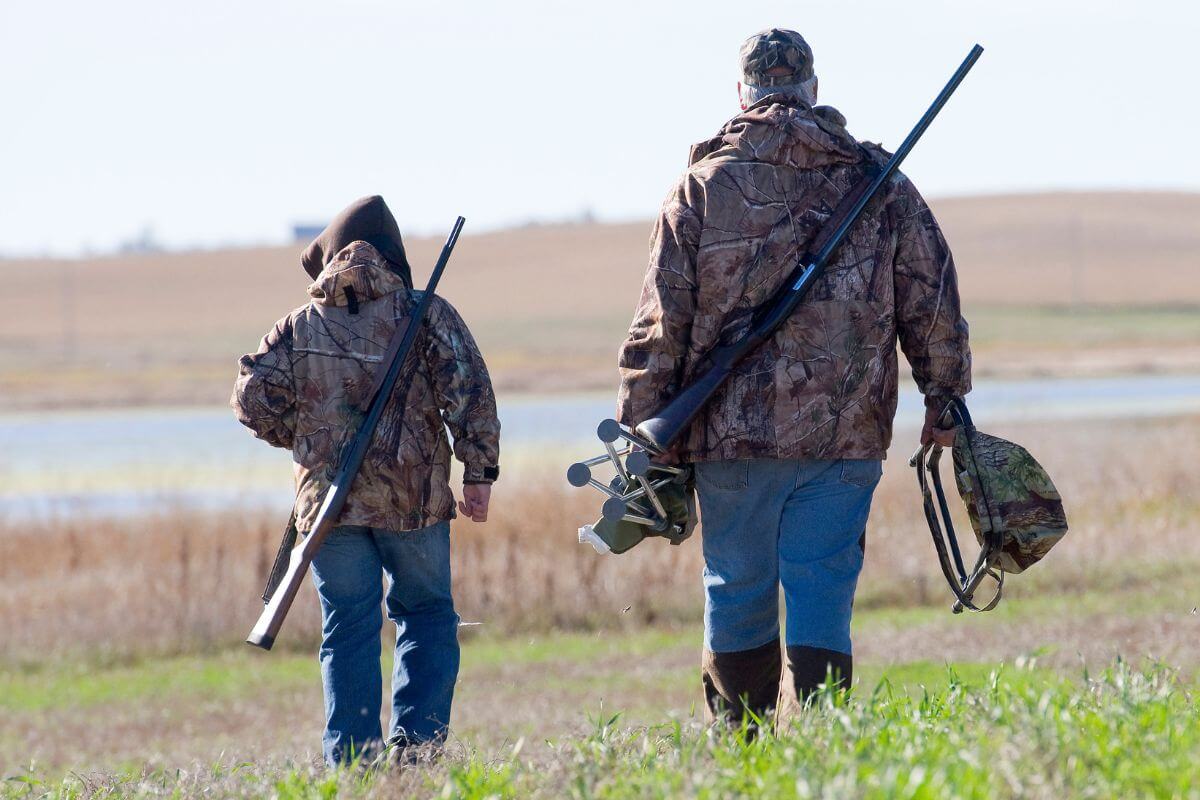
A northwestern Montana whitetail buck is a sharp critter, swiftly sensing any intrusion across the state’s varied mountain ranges. Montana whitetails are shyer than mule deer, often calling for more strategic hunting.
To increase your chances of a successful hunt, consider the following top Montana whitetail hunting tips:
- Find the Best Places – Your hunting success heavily hinges on location. Scope out areas rich in food sources, water, and shelter, keeping in mind the deer’s natural flows.
- Choose the Best Deer Hunting Tactics – Reflect on past tactics – what worked and what didn’t? For an incredible hunting opportunity, consider adjusting your approach to match the landscape and the deer’s behavior.
- Play the Wind – Montana’s diverse topography affects how the wind behaves. Mastering this will give you the upper hand.
- Practice Shooting – Proficiency with your chosen weapon is paramount. You won’t get endless chances to bag a big whitetail.
- Be Patient – Avoid excessive human pressure, which can scare deer off. Patience is key – let the situation develop without forcing it.
- Rut-Hunting – During rut season, which typically spans November, females gather, and mature bucks eventually make an appearance.
- Deer Calls – Bringing out antlers or grunt tubes can be highly effective during the pre-rut and rut seasons.
Each Montana location can offer different deer hunting trips, and an incredible opportunity awaits you in this sprawling state if you’re willing to observe, analyze, and adapt. Remember, hunting in Montana offers a unique blend of challenges and rewards, so be open to learning and evolving your approach.
Montana Whitetail Hunts Final Thoughts
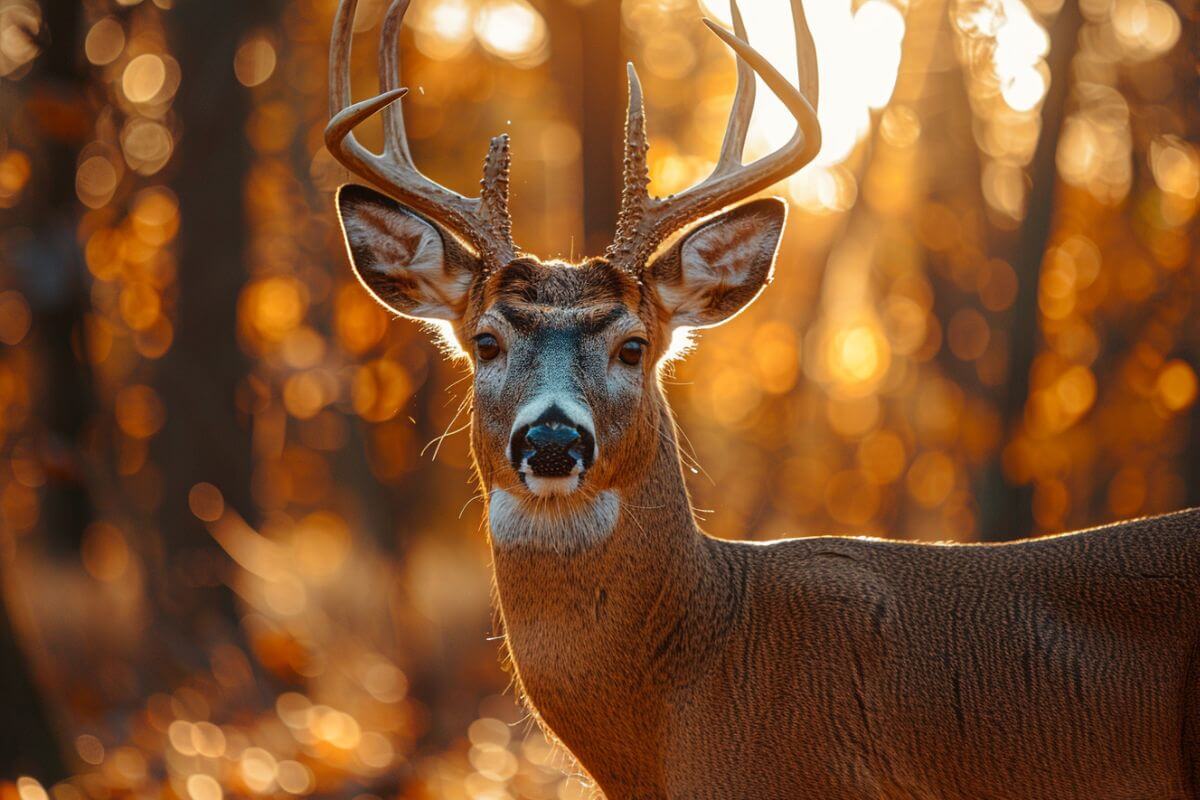
Navigating Montana’s expansive wilderness and mastering the art of whitetail hunting is not just about initiative — it’s a blend of science, skill, and a deep understanding of the deer’s behavior.
As you set out to immerse yourself in the grandeur of Montana’s hunting landscapes, remember to study the whitetail’s habits, scout your locations diligently, and be prepared with quality gear for that perfect shot.
Montana offers an exhilarating hunting experience for both amateurs and seasoned hunters alike. By choosing expert outfitters, and being patient in your pursuit, you’ll not only increase your chances of a successful hunt but also contribute to the preservation of Montana’s bountiful wilderness.
So, prepare yourself, fine-tune your bow, follow the whitetail’s trail, and let the hunt in Big Sky Country begin.
Montana Whitetail Hunts FAQs
1. Where Is the Best Whitetail Deer Hunting in Montana?
Montana offers excellent whitetail deer hunting opportunities, with some of the best areas located in the eastern and southeastern parts of the state. Regions such as the Missouri River Breaks and Flathead National Forest are known for their abundant deer populations and quality hunting experiences.
2. How Much Is a Guided Deer Hunt in Montana?
The price of a guided deer hunt in Montana can fluctuate significantly, depending on the outfitter, the duration of the hunt, and the amenities offered. Typically, you should anticipate spending between $2,000 and $5,000 or higher for a guided deer hunt in Montana.
3. How Big Are the Whitetails in Montana?
Montana is home to a variety of whitetail deer, and their size can vary across different regions of the state. Generally, Montana’s whitetail deer can have body weights ranging from 100 to 200 pounds, with some larger bucks exceeding 200 pounds.
4. What Is the Montana State Record for Whitetail Deer?
The largest typical whitetail deer ever caught in Montana is documented to have scored 199 3/8 inches. Thomas H. Dellwo harvested this impressive whitetail deer in 1974 in Missoula County, and his record has stood since then.
5. What Is the Best Unit to Hunt Deer in Montana?
Unit 270 in Montana is renowned as one of the finest trophy mule deer units in the state. Those who hold the tag can anticipate the sighting of over 20 superior-quality bucks per day.
Dive deeper into the wonders of Montana through the articles below:

